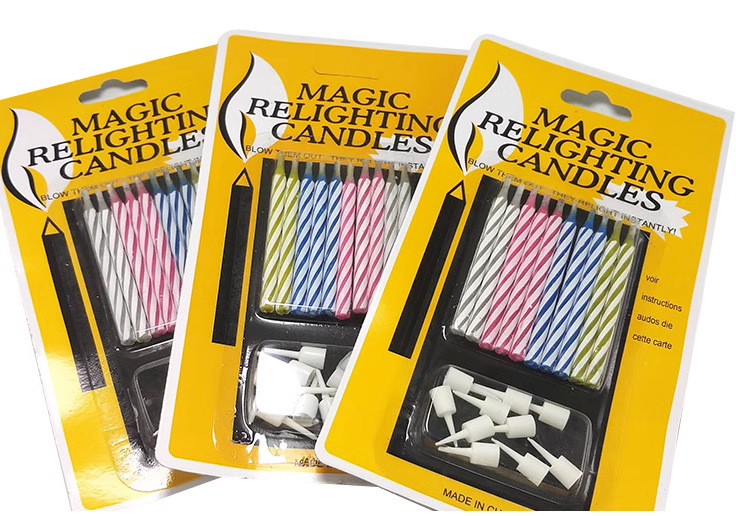 It’s a familiar scene at birthday parties and other celebrations: The guest of honor blows out the candles on his or her birthday cake. Thin ribbons of smoke escape from the wicks, signaling the guests to clap and cheer.But wait! The wicks begin to glow a fiery red. They flicker, and suddenly the flames reappear. Looking bemused, the birthday boy or girl tries to blow out the candles—again and again, much to the delight of the onlookers.
It’s a familiar scene at birthday parties and other celebrations: The guest of honor blows out the candles on his or her birthday cake. Thin ribbons of smoke escape from the wicks, signaling the guests to clap and cheer.But wait! The wicks begin to glow a fiery red. They flicker, and suddenly the flames reappear. Looking bemused, the birthday boy or girl tries to blow out the candles—again and again, much to the delight of the onlookers.
Trick candles, also known as magic candles, can add a flash of spontaneity to any party. The chemistry that allows these candles to repeatedly reignite turns out to be surprisingly simple.
In a trick candle, magnesium powder is incorporated into the candle’s wick. Magnesium is a highly reactive metal when powdered or sliced thinly. It can ignite at temperatures as low as 800 ºF (430 ºC). When the flame is blown out, the hot embers from the wick ignite the magnesium powder, producing tiny sparks. This, in turn, ignites the vaporized paraffin hydrocarbons, which relights the wick. The magnesium found lower down in the wick doesn’t burn because it is protected by the paraffin. Magnesium powder is used in trick candles because it is flammable at a lower temperature than other pyrophoric metals such as aluminum or iron.
Contact: Cici Ren
Phone: +86 15373024760
E-mail: cici@hgpartysupplies.com
Add: Zijingyuecheng 11-5,Tangu North Street NO.62, Chang'an District, Shijiazhuang City, Hebei Province, China.